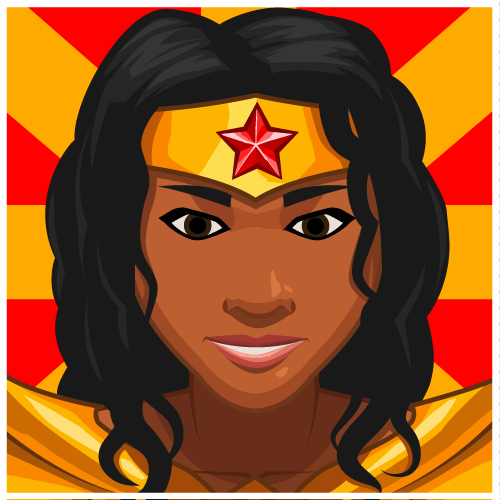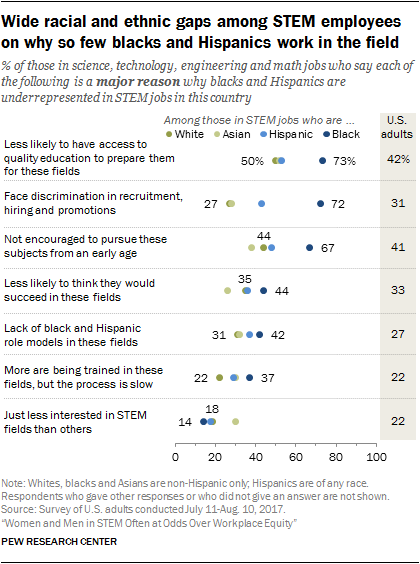While computer science can open a world of opportunity for your students, some students are still being left behind and unrepresented in the STEM fields. Here are a few ways that you can help your students bridge the digital divide.
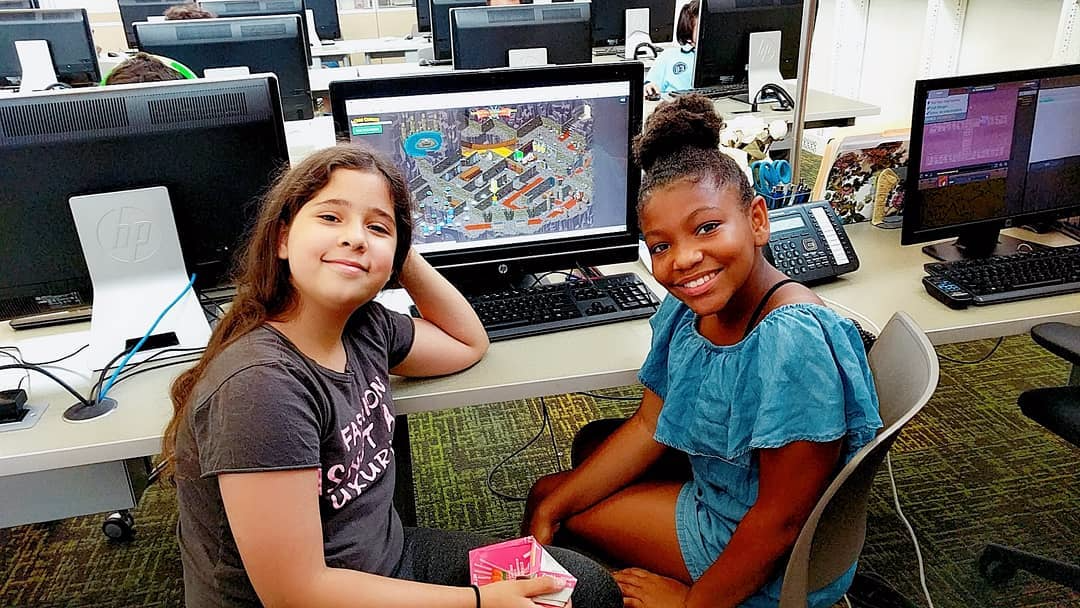
Image: @Imbtecklab
Computer Science is the key to unlock many doors in your students' future, and not just for software engineering. Many jobs in the fields of IT, data analytics, design, engineering, and science already require programming knowledge, and the numbers are growing. There will be an estimated 1 million more computing jobs than applicants that can fill them by 2020, according to estimations by Code.org based on U.S. Bureau of Labor Statistics numbers.
Unfortunately, not all students have the same access to those doors of opportunity that Computer Science opens, as Black, Hispanic, female, and students from other marginalized communities have a lower likelihood of early exposure to computer science concepts than their White and Asian peers, putting them at a major disadvantage for future job prospects.
My daughter started 9th grade yesterday. Her first class of the day was Computer Science. A class of 19 boys and her.
— Jeff Blankenburg (@jeffblankenburg) August 17, 2018
The teacher thought she was lost, and asked which room she was looking for.
And we wonder why this industry has a diversity problem.
This tweet highlights the challenge we are facing and the critically important role of educators in breaking down the divide.
Much has already been said about what is commonly referred to as the ‘digital divide’ or the lack of access and exposure to technology that female, Black, and Hispanic children experience as well as other underserved communities all over the country.
The reasons behind the divide are varied and complex but have a unifying theme; a lack of early exposure to the resources (hardware, software, motivating teachers), and thus a lack of the encouragement and confidence they need to pursue careers in STEM fields like computer science.
Woman account for 47 percent of U.S. jobs but only held 24 percent of STEM jobs according to a Women in STEM 2017 report by the U.S. Department of Commerce.
Black and Hispanic people make up about 27 percent of the U.S. workforce as of 2016 but account for only 16 percent of those employed in a STEM job. 73 percent of Black people working in STEM attribute this to a lack of quality education that prepares them for jobs in STEM and a lack of encouragement to pursue STEM jobs at an early age, according to a 2017 study done by the Pew Research Center.
The introduction of a second AP Computer Science course, AP Computer Science Principles, in 2016 helped increase female, Black, and Hispanic participation in AP computer science exams. Unlike the AP Computer Science A course, which emphasizes Java use for technical solutions, AP Computer Science Principles takes a broader approach to computer science and allows students to view computing through a creative and collaborative lens. It also gives students the opportunity to “use technology to address real-world problems and build relevant solutions”.
The College Board data confirms that while the amount of students taking the AP Computer Science exam has grown since 2013, the number of minority students taking the AP Computer Science exam remained largely unchanged until the introduction of AP Computer Science Principles in 2016.
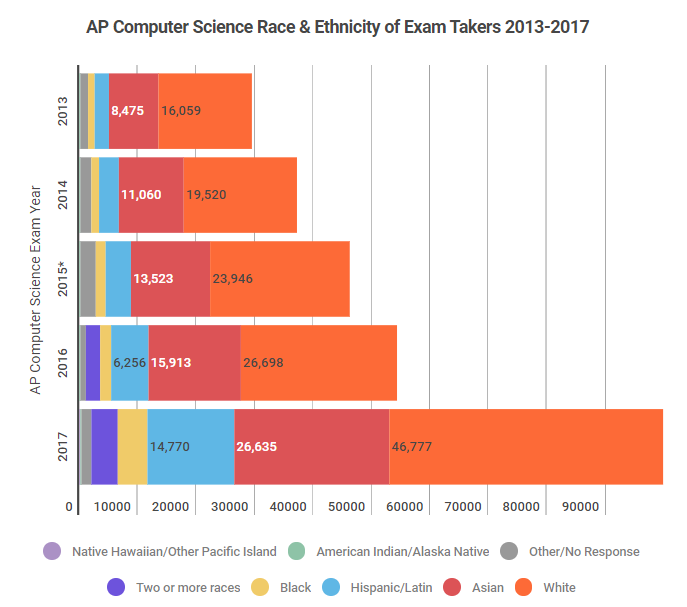
Source: https://research.collegeboard.org/programs/ap/data/participation/ap-2017
While the boost in minority and female AP Computer Science exam takers is a great sign, there is still a long way to go in narrowing the large disparity between those students who enter the workforce and those that actually move into careers in STEM. The combination of access, early exposure, and tools and techniques that increase encouragement and confidence can create the perfect environment to inspire interest in computational thinking and STEM careers.
The increased enrollment in AP Computer Science Principal exams demonstrates that there is a bigger need to develop new ways to attract students to coding which offers them a challenging but approachable launch point to explore many career opportunities.
Looking back at the obstacles minority and female students must face we know the base factors include: a lack of information access, confidence, and encouraging role models.
These factors are also reciprocal; one factor may have an effect on the other. Students who do not have early access to computer science will not have the same level of familiarity, information retention and comprehension as a peer who does and will then lack the same confidence. Students will also have confidence issues if they do not have teachers or parents who encourage them to challenge themselves or how to work with the information they learn. The issue is worse for minority students who do not see role models or educators in computer science or STEM education that look like them.
You may not be able to control factors outside of the classroom such as a student's level of broadband, hardware, or support at home, but there are steps you can take in the classroom to help students develop a familiarity with computer science and hopefully an interest in STEM careers:
- Provide access to the right resources - as early as you can:
A one-size-fits-all approach does not work with all students, especially those with varied backgrounds and experiences. Students need to actively engage with the material in order to become excited about what they’re learning. The fastest way to get students started with computer science is to engage them in a familiar environment.
At CodeCombat we use a game-based approach to teach students how to type real code in order to truly prepare them for computer science careers. According to a study of 1102 random 12-17-year-olds by the Pew Research Center, 97 percent of students play games including 94 percent of teen girls. A more recent 2018 Pew study found that Hispanic teens and 84 percent of students from lower-income families also have increased access to games in the home. Feedback from CodeCombat’s teachers tells us game-based learning not only motivates their students but is better at helping them focus on and retain the information they learn.
- Do everything possible to foster the three ‘C’s: confidence, collaboration, & creativity
The introduction of AP Computer Science Principles and its popularity among minority and female students is a big sign that broad based courses and tests that emphasize collaboration and creativity in computational thinking work better for underrepresented students.
However, enrollment among minority and female students is still comparatively low and demonstrates that more can be done to promote equity in the classroom.

Source: *Based on combined data of Computer Science A and Computer Science Principles. See update in how ethnicity is collected and reported by the College Board.
When female and minority students feel comfortable enough to make mistakes, collaborate, and share how they creatively worked for a solution they gain the confidence to pursue greater challenges.
You can encourage the 3 ‘C’s in your classroom in many ways:
- Introduce pair programming
- Change up your grading system to reward risk-taking, experimentation and brainstorming
- Give students ample time to complete projects or award credit for partial work with bonus points for statements explaining or vocalizing their intentions
- Set attainable goals for the student and the entire class, let students vocalize or write down their thought process
- Allow students to make mistakes and find curriculum platforms that provide them immediate feedback, etc.
- Be an encouraging role model for your students and seek out opportunities to introduce representation in the classroom.
The most important key to helping students gain the tools they need to pursue careers in computer science is YOU, the teacher. You have the power to say one word that can either nourish or diminish your student’s confidence. You have the power to allow creativity and collaboration to flourish in your classroom. You have the power to introduce computational thinking to your students as soon as you can. You have the power to help each and every student believe they can have careers in computer science or STEM.
Another important thing you can do in the classroom is recognize that representation matters. It’s important for all students, especially minorities to see that STEM careers are attainable to them because there are programmers and scientists that look like them.
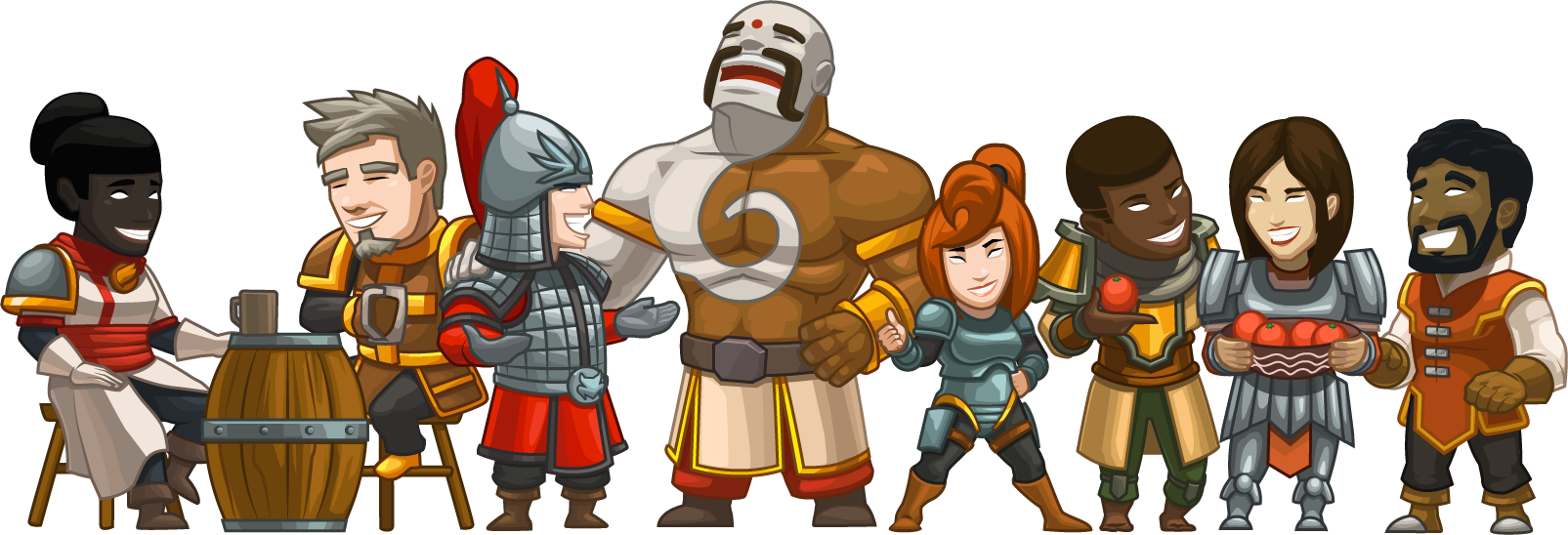
Early on CodeCombat introduced a diverse cast of male and female heroes for players to choose from because we knew it was important for all students to see themselves represented. We’ve always believed learning to code should be accessible to everyone and continue to use this as a guiding principle.
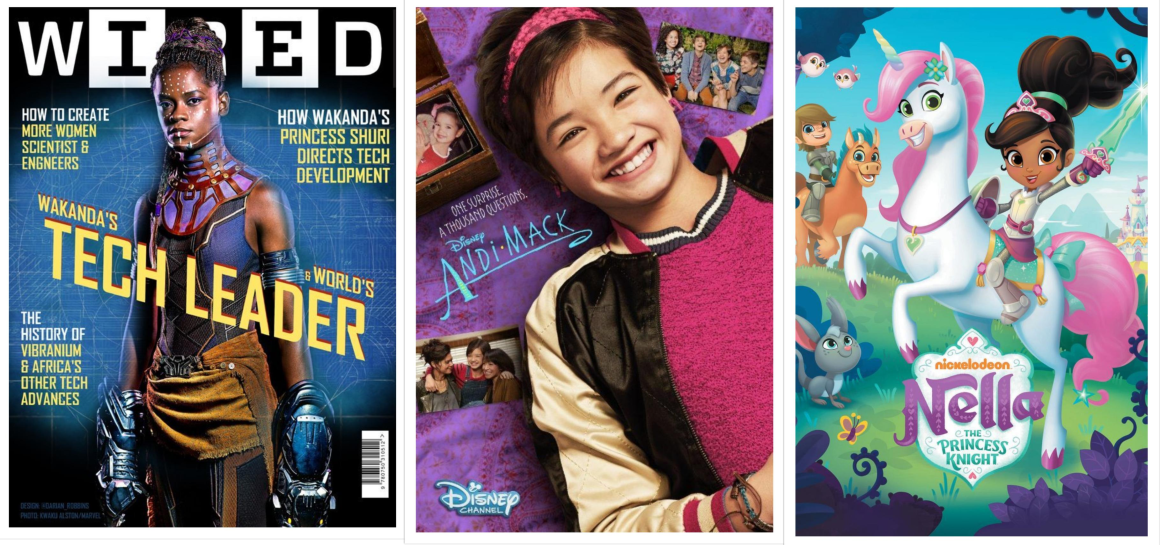
The massive success of Walt Disney’s Black Panther has not only broken records and demonstrated the importance of representation but may also inspire a new wave of students to explore STEM careers.
On the heels of Black Panther’s success, Disney announced a $1 million donation to the Boys and Girls Club of America to help expand its STEM programs all over the country and in underrepresented areas. No doubt, one of Disney’s driving inspirations for promoting STEM programs for underserved communities is the popularity of Shuri, the teenage genius behind Wakanda’s inventions and technological operations who also happens to be the Princess of Wakanda.
Characters that may not be STEM-focused, like Nickelodeon’s Nella, the Princess Knight or Disney Channel’s Andi Mack, about the life of a crafty mixed Asian American teen, can still serve as educational sources of confidence that allow students to see themselves in any role they can imagine. Sources of representation that defy stereotypes may help another subset of students (White males or Asian/South Asian) who are seemingly expected to automatically do well in STEM classes and computer science courses but may secretly struggle with concepts and not seek help.
While White and Asian students are the majority of AP exam takers and fill a majority of the roles in STEM jobs, not all students in your class will fit that mold and may even feel left behind because they don’t “meet” academic expectations or preconceived ideas of their success. The pressure of success, especially for Asian/South Asian students can have a detrimental effect on their overall schooling.
Entertainment media and books are important sources of STEM representation you can introduce into the classroom but there is a long list of STEM organizations and clubs you can work with that empower underrepresented groups:
- Black Girls Code
- Girls who Code
- Technolochicas
- Hack the Hood
- Boys and Girls Clubs of America
- Code.org
- Science Club for Girls
- The Hidden Genius Project
What can be some of the incredible outcomes of increasing access, the 3 C’s and representation?
-Your students become advocates and mentors for other underprivileged students once they make it.
Female and minority students with computer science experience will not only improve their own economic and social standing but will also help improve the lives of others by creating after-school programs, volunteering, and hiring more female and minority computer programmers (helping end the challenge of unconscious bias that occurs during recruitment and hiring).
-Your students will have better job opportunities.
Computers and technology affect every aspect of our society which creates a high demand for innovations that enrich our lives, help us connect, advance our research, and generally change the way we think. Computer science careers are expected to grow 13 percent through 2026 faster than the average for all other occupations according to the U.S. Bureau of Labor Statistics, which means an additional 557,100 new jobs waiting to be filled by the huge untapped talent pool of female and minority students.
-Your students will create media and tech that truly reflects the world around them and develop solutions for global issues.
The wildly successful movie, Hidden Figures became a reality because it was written by a Black woman named Margot Lee Shetterly. The remarkable minds that made our race to space possible would have remained largely unknown if Shetterly hadn't written the book. Hidden Figures has become an important source of representation and inspiration, especially for Black women and girls. Disney approached Ava DuVernay to direct the science-inspired, A Wrinkle in Time and she aggreed to direct only if she could cast a Black girl in the lead.
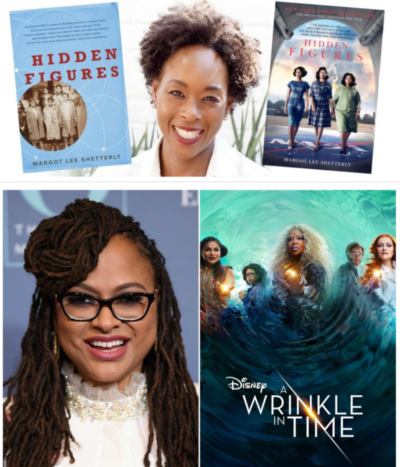
-Your students will have a real pathway to socio-economic growth.
The [median annual pay for computer and information technology jobs was $114,520](https://www.bls.gov/ooh/computer-and-information-technology/computer-and-information-research-scientists.htm in May 2017), higher than the median annual wage for all occupations of $37,690.
-Your students will develop in-demand skills that they can use in other fields and will give them a competitive advantage.
Computing is the base point for other STEM careers and computational thinking is a flexible skill set that will make them valuable in the workforce. Through coding, students improve their performance in other subjects like math, will learn the basis for hard skills such as programming, and will also develop valuable soft skills namely focus, confidence, creativity, collaboration, resilience, and problem-solving among others.
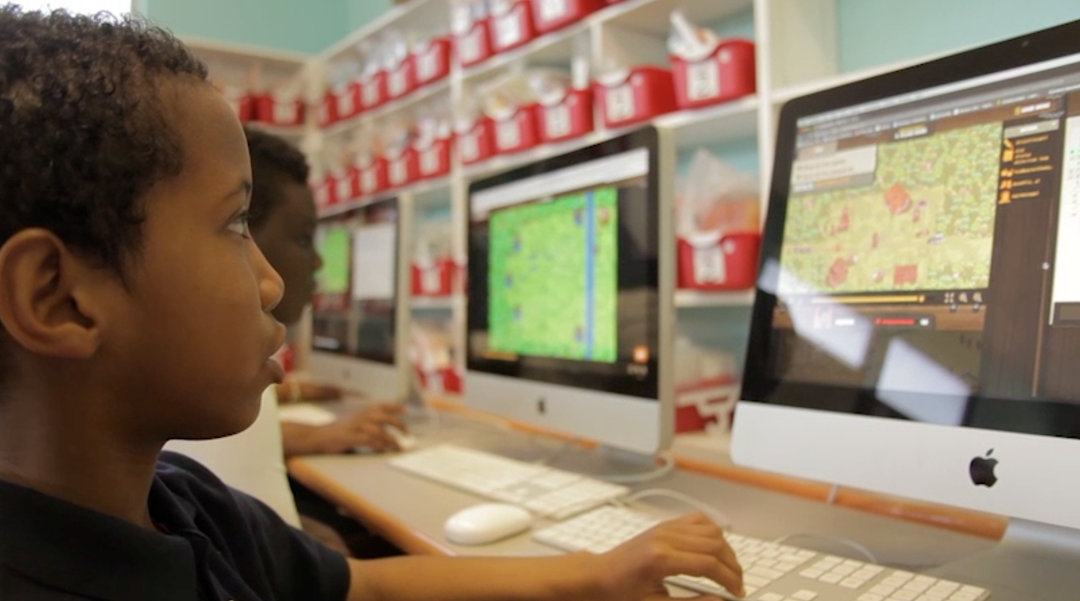
While there is much at play in order to inspire underrepresented students to enter STEM careers like computer science, we believe these steps are critical components for our students to displace the workplace and recruitment obstacles that currently exist in STEM hiring and recruitment.
Students need specific solutions and inspiration that all start in the classroom: Information access, early exposure to encourage computational thinking and inspire interest, encouragement from their role models and teachers in order to inspire confidence and creativity, and access to advocates and other role models that look like them so they know they can make it in STEM fields too.
The game-changers, inventors, and innovators of the future are of every race, ethnicity, gender and socio-economic background. And they come from our classrooms. A teacher that inspired them to continue despite the challenge. A parent or educator that encouraged them to reach just a little bit farther beyond their grasp. Computer Science may be the key to breaking a cycle of digital and economic disparity for underrepresented students and our amazing educators are the conduits of opportunity that will lead them there.

Continue the adventure! Share your pictures, stories and feedback with us on Twitter & Facebook, join the discussion on our Forums or contribute to our open source community. Check out this post if you're interested in contributing to our blog.
About CodeCombat:
CodeCombat is a platform for students to learn computer science while playing a real game. It has been played in 200 countries around the world and has helped 5M users learn Python and JavaScript. Used by more than 31,000 teachers in more than 13,000 schools in North America. Built for all learners and teachers, recommended for grades 4-12 and recognized by the College Board as an endorsed provider of curriculum and professional development for AP® Computer Science Principles (AP CSP). Teachers, students, and individuals can sign up for CodeCombat and try the first level for free.

